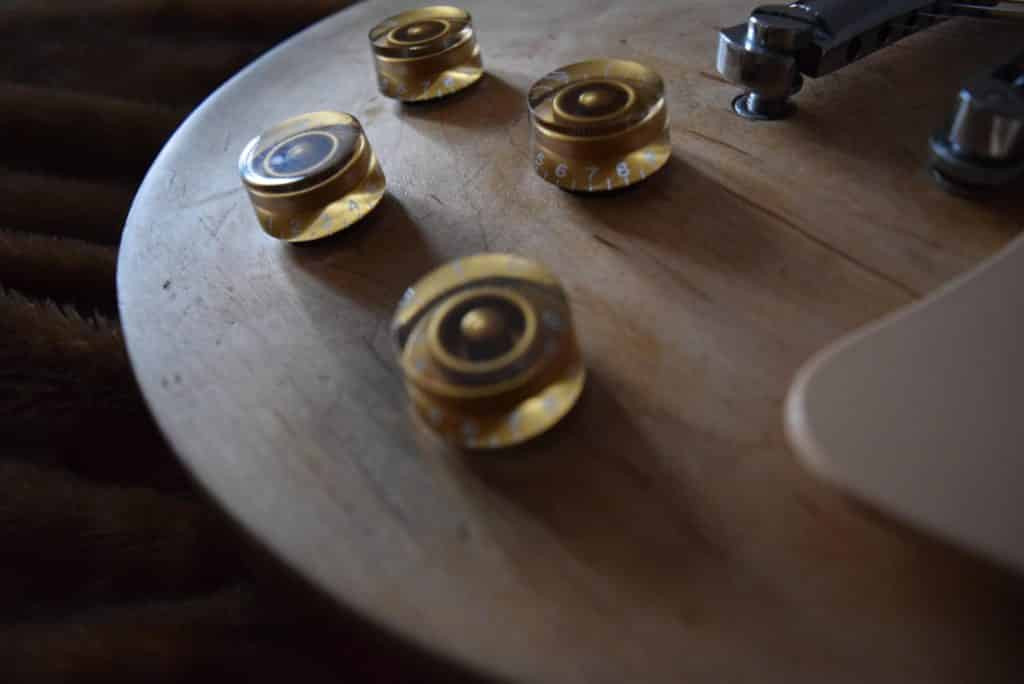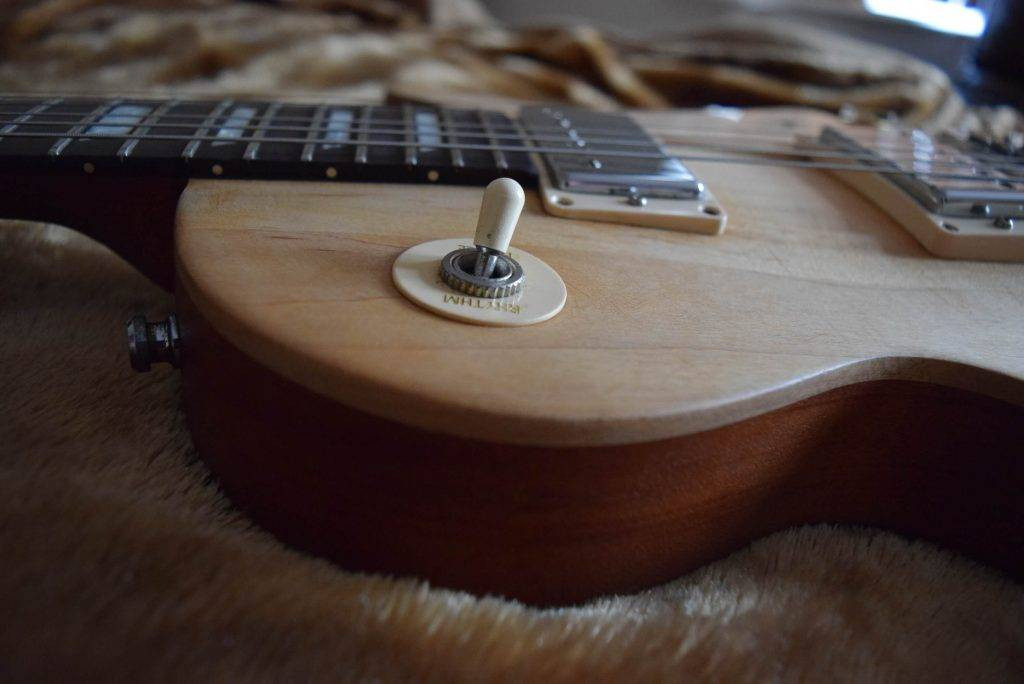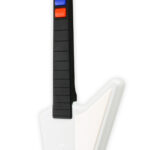Is the Les Paul Studio the Right Electric Guitar for You?
The Gibson Les Paul Studio. It’s a name that resonates with guitarists of all levels, conjuring images of rock legends and timeless tones. Instead of rehashing readily available specs and history—which you can easily find in countless articles online, including our own discussions comparing Les Pauls to Stratocasters—this review dives deep into a personal decade-long journey with a 2003 Gibson Les Paul Studio. This is an honest, warts-and-all account, from the initial excitement of buying it brand new online for £799 from Merchant City Music in Glasgow, to the bittersweet decision to part ways with it ten years later, selling it for £600. This isn’t just a spec sheet rundown; it’s a real-world perspective on living with and playing a Les Paul Studio.
Gig-Ready Out of the Box? Maybe Not Quite.
While the Gibson Les Paul Studio boasts the iconic Les Paul design, don’t expect absolute perfection straight from the factory. My 2003 model, for instance, arrived with bridge saddles that were surprisingly sharp. These edges acted like miniature knives, causing my wound strings to fray and break far too quickly. Instead of immediately making adjustments myself, I opted to let the strings naturally wear down the saddles, a process that took around four weeks of regular gigging. Interestingly, my backup guitar at the time, a 2004 Epiphone Les Paul Standard – a guitar I’ll reference frequently for comparison – didn’t exhibit this issue, despite costing less than half the price.
Another factor to consider is the neck profile and finish. My Studio featured a substantial ’50s style neck with a nitrocellulose finish that could feel a bit sticky, especially when new or in humid conditions. If you prefer slimmer, faster necks, or a less ‘grabby’ finish, this is something to be aware of.
Gibson Les Paul Studio
Les Paul Studio vs. Les Paul Standard: More Than Just ‘Light’?
It’s a common misconception to view the Gibson Les Paul Studio as simply a stripped-down Les Paul Standard. While it’s true that the Studio’s body is approximately a quarter of an inch thinner than the Standard, this is arguably the only truly sonically relevant difference. Crucially, the Les Paul Studio retains the core elements that define the Les Paul sound: the same electronics, the powerful Gibson 490R and 498T pickups, a nitrocellulose finish, and a rounded ’50s mahogany neck profile with a rosewood fingerboard. While the Standard offers the option of a thinner ’60s neck profile, the Studio holds its own in terms of fundamental construction and components.
Cosmetically, there are distinctions. The Studio line typically features plainer maple tops compared to the often highly figured tops of Standards. You also forgo the pearloid Gibson headstock logo and, most notably, the neck binding. However, the absence of neck binding can actually be seen as a practical advantage. During that era, Gibson’s binding process sometimes resulted in the binding overlapping the fret ends, which could catch strings during bends. The Studio avoids this potential issue.
My 2003 Les Paul Studio came in an ebony finish with silver hardware, giving it a distinctly modern and cool aesthetic. I personally didn’t miss the traditional sunburst finishes. It also featured speed knobs, which I considered an upgrade from the standard knobs on my Epiphone Les Paul Standard.
 Ebony Gibson Les Paul Studio with silver hardware Gibson Les Paul Studio
Ebony Gibson Les Paul Studio with silver hardware Gibson Les Paul Studio
Playability: Does the Les Paul Studio Live Up to the Legend?
Les Paul guitars are often lauded for their playability, a sentiment echoed by Les Paul himself. While I appreciate the Les Paul’s feel, I personally find the longer scale length of Fender Stratocasters provides more comfortable spacing for my larger hands. Stratocasters are also arguably more ergonomic overall, sitting more comfortably against the body thanks to their body contours.
However, the Gibson Les Paul Studio excels in areas of action and string tension. My Studio achieved the lowest buzz-free action I’ve ever experienced on any guitar. Combined with its shorter scale length, which results in slightly less string tension, and a set of .009 gauge strings, it was almost too easy to play. This effortless playability might even tempt you to move up to a heavier gauge string to unlock the tonal and tuning stability benefits that thicker strings offer.
Furthermore, the slightly thinner body of the Les Paul Studio means its weight is closer to that of a Stratocaster, making it more comfortable for longer playing sessions compared to some heavier Les Paul models.
Returning to the Epiphone Les Paul Standard comparison, while the Epiphone came surprisingly close in overall feel, the Gibson Les Paul Studio consistently offered superior fretwork and a more refined fretboard. The Gibson’s slinkier setup and finer finishing always made it a joy to return to.
The Sound: Unlocking the Tones of the Les Paul Studio
If you’re aiming for iconic tones like “Brothers in Arms” (Dire Straits) or “Sweet Child O’ Mine” (Guns n Roses), a Gibson Les Paul with its neck pickup is essential. Nothing else quite captures that broad, flute-like, syrupy, and richly warm overdriven neck pickup tone.
In my personal experience, however, the Gibson 498T bridge pickup was my primary workhorse, accounting for about 95% of my playing time on the Studio, excluding those moments when that signature Les Paul neck pickup ‘woman tone’ was specifically required. The neck pickup, while beautiful for certain applications, could become too muddy for heavily overdriven rhythm parts. Conversely, the bridge pickup possesses a powerful presence that cuts through any mix.
It’s often said, and I’ve echoed this in my own writings comparing Strats and Les Pauls, that a Fender Stratocaster cuts through a mix with precision, like a knife, thanks to its finely tuned EQ curve. A Les Paul, in contrast, is sometimes described as more of a tank, relying on sheer power to make its presence felt.
I agree with this to an extent, but my preference for cutting through with output stems from a desire for a sustaining, almost feedback-laden, singing guitar voice, rather than a sterile, clean-ish signal. I want notes to hang in the air and be shaped dynamically, not abruptly decay. The 498T pickup perfectly achieves this balance, offering crisp, cutting highs, penetrating, woody mids, and controlled yet deep bass. It’s an instantly recognizable and deeply satisfying tone that’s easily managed with minimal adjustments.
The Gibson 490R and 498T pickups were standard across much of Gibson’s range at the time, even appearing in high-end Custom and Supreme models. While lower output Burstbuckers have become more prevalent on many models today, I never personally viewed them as an upgrade. The 490R and 498T are, in my opinion, two of the most recorded and influential pickups in guitar history, and remain highly sought after in vintage and used Gibson Les Pauls.
The sonic nuances of the Les Paul Studio became particularly apparent early in its life, when the bridge saddles were still sharp, and my Epiphone Les Paul Standard was frequently used as a backup. Despite upgrading the Epiphone with new pickups (Seymour Duncan ’59 neck and JB bridge) and electronics, the Gibson Les Paul Studio consistently sounded wider, classier, clearer, cleaner, and more naturally resonant compared to the slightly muddier and narrower sounding Epiphone.
 Gibson Les Paul Studio in natural light showing wood grain Gibson Les Paul Studio
Gibson Les Paul Studio in natural light showing wood grain Gibson Les Paul Studio
Versatility: More Flexible Than a Les Paul Standard?
The Gibson Les Paul Studio’s versatility shines when you explore its volume and tone controls, or when you dial back your amplifier gain. While the Les Paul Standard of that era could sometimes feel a bit monolithic and less responsive to dynamic changes, the Studio seemed leaner and more adept at transitioning into cleaner tonal territories. While it will never match the pristine clean tones of a Fender Stratocaster, the Studio offers enough versatility for live performance situations where switching guitars isn’t practical.
The taper of the volume and tone controls on my Studio was always smooth and predictable, avoiding sudden volume jumps or gain drops, and remaining free of crackling static. At full volume and tone, it might sound slightly less full-bodied than a Les Paul Standard, but this characteristic becomes an advantage when you begin to roll back the controls. Reducing the volume and tone yields a more usable, lower-powered rhythm tone that retains crucial high frequencies and clarity.
Durability: Built to Last? The Nitro Finish Question.
The robust construction of a one-piece angled mahogany neck suggests a long lifespan for a Gibson Les Paul Studio, assuming it’s properly cared for. In theory, it should last a lifetime.
However, my experience highlighted a significant caveat: the nitrocellulose finish. After about 4 or 5 years of regular use, the finish began to degrade. While I’ve seen vintage instruments with nitro finishes age gracefully, developing the sought-after “patina,” moisture infiltrated the nitro finish on my Studio, causing unsightly blistering and a patch of exposed bare wood.
The key takeaway is that nitrocellulose, while contributing to the guitar’s tone and vintage feel, is not inherently a durable finish. It requires careful handling and environmental control to prevent damage.
A DIY Transformation: The Natural Wood Les Paul Studio is Born.
The finish damage presented an opportunity for a unique customization. Partly out of necessity and partly driven by a desire to salvage the guitar’s appearance, I removed the strings and control knobs and embarked on a DIY refinishing project, armed with sandpaper. Time was limited due to a busy rehearsal and gigging schedule, so a complete disassembly wasn’t feasible. I focused on doing the best job I could within the constraints.
During this process, I inadvertently damaged the bridge tone pot, likely due to sawdust contamination. Instead of replacing it immediately, I simply disconnected it. This accidental modification had a surprising and positive effect, subtly boosting the bridge pickup’s top end and output – a change I actually grew to appreciate!
After sanding, the guitar was sealed with two coats of Danish oil (ideally, three coats would have been preferable had time allowed). I also replaced the black switch tip and pickup surrounds with cream-colored parts, and swapped the black control knobs for amber ones.
The results were striking. My Les Paul Studio was transformed into a beautiful, natural wood instrument, with customized wiring and the added benefit of a satin finish on the back of the neck, which felt significantly faster and smoother than the original sticky nitro finish.
Gibson Les Paul Studio Refinished
Tuning Stability: A Post-Refinish Challenge.
Unfortunately, from that point onward, maintaining consistent tuning on my Gibson Les Paul Studio became more of a task. Perhaps an additional coat of Danish oil would have helped, but without the protective nitrocellulose seal, the guitar seemed more susceptible to environmental changes. The wood appeared to have softened, possibly due to moisture absorption, and it drifted out of tune more readily. Furthermore, I felt that the nitro finish had contributed to the guitar’s overall sonic character, imparting a certain ‘sheen’ or cohesiveness to the tone, which was now absent.
The nut also seemed to require more frequent attention. It’s possible that sawdust or other debris had lodged in the nut slots, or perhaps it was simply nearing the end of its lifespan. Regardless, string bending began to cause tuning instability, despite my best efforts to clean and lubricate the nut slots.
 Close up of the Gibson Les Paul Studio headstock and tuning pegs Gibson Les Paul Studio Headstock
Close up of the Gibson Les Paul Studio headstock and tuning pegs Gibson Les Paul Studio Headstock
Time to Move On.
Despite these emerging issues, I persevered with my Les Paul Studio, primarily because I still loved its unique look, its inherent playability, and the personalized character imparted by the modifications. However, as my Gibson Les Paul Studio approached its tenth year, other problems began to surface. The jack socket showed signs of rust, one of the endpin holes required constant shimming with matchsticks to remain secure (a common guitar repair trick), and the control knobs were becoming loose and unreliable. Essentially, the guitar was showing its age and the effects of heavy use.
More concerningly, I began to suspect that the wood itself was retaining moisture, contributing to a muddier overall tone. This could have been subjective, or perhaps the magnets in the Gibson 490R and 498T pickups were simply mellowing with age after a decade of use.
In a live performance context, minimizing distractions is crucial. Unfortunately, my Gibson Les Paul Studio, once my prized instrument, had become a source of minor but persistent annoyances.
Considering a New Gibson Les Paul Studio?
If you’re in the market for a new Gibson Les Paul Studio, consider supporting our blog by using our Guitar Center affiliate link here or clicking the image below.

